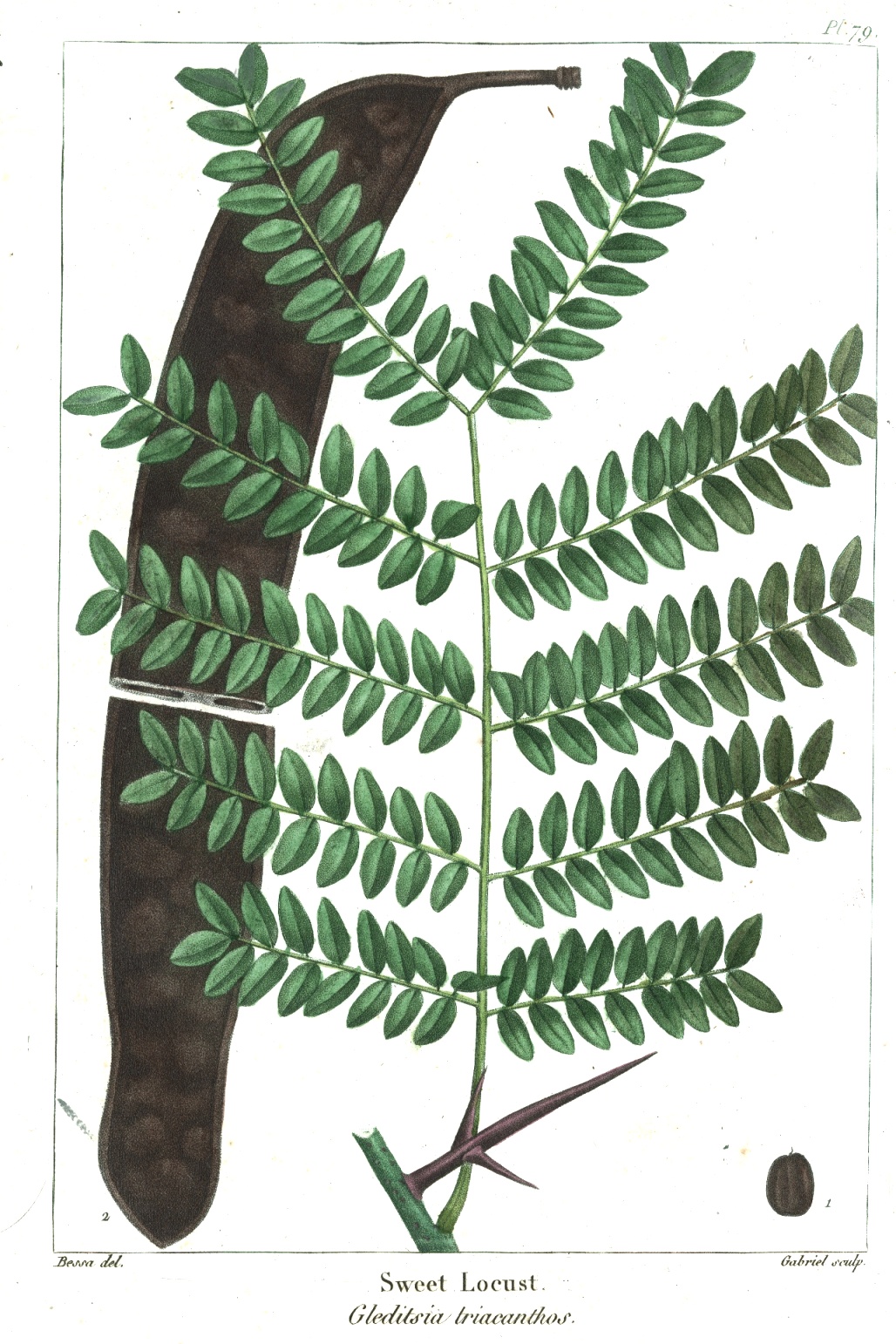Gleditsia triacanthos
Gleditsia triacanthos
The Sweet locust (Gleditsia triacanthos L., 1753) is an arboreal species of the Fabaceae family.
Systematic –
From the systematic point of view it belongs to the Domain Eukaryota, Kingdom Plantae, Magnoliophyta Division, Magnoliopsida Class, Sottoclasse Rosidae, Order Fabales, Family Fabaceae, Subfamiglia Caesalpinioideae and then to the Genus Gleditsia and to the Specie G. triacanthos.
Etymology –
The term Gleditsia was attributed as a genus to the German botanist Johann Gottlieb Gleditsch (1714-1786) who was Director of the Berlin Botanical Garden. The specific epithet triacanthos comes from the Greek τρεῖς treís tre and from ἄκανθα ácantha spine: with three thorns or with three-pronged thorns.
Geographic Distribution and Habitat –
Sweet locust is a tree with North American origins where it forms mixed thermophilous woods of broad-leaved trees. In this region it is widespread from South Dakota to Texas. The species was introduced in Europe in the mid-eighteenth century and today is a very common species in parks and also in road trees. The introduction in Italy occurred in 1712 where it is currently present in the north and in the center. Introduced for ornamental purposes, this species tends to become spontaneous, forming small populations along the railway tracks and escarpments.
Description –
Gleditsia triacanthos is a species that can reach 30 meters in height in the areas of origin; the plant shows a light and expanded crown upwards; the trunk is straight with brownish rind, smooth or with few grooves; on its surface, tufts of red branched thorns often develop. The leaves are composed, deciduous, alternate and petiolated and are of two types: some occur once pinnate, others bipinnate, ending or not with apical segment. The segments are lanceolate, 1 cm long, glabrous and sublucid. The flowers are both unisexual and bisexual on the same plant have a white and light green color; these are arranged in axillary racemes of about 10 cm, provided with a corolla sketch from which stamens and pistils protrude. The antesis is between May and June. Fruits are fusiform, subclinical, indiscent, hairless, reddish, reddening (20) 25-50 x 2.5-5 cm lomenti (legumes). The seeds of 8.5-10 x 6.5-8 mm, are ovoid, smoothed, smooth, brown.
Cultivation –
The Gleditsia Triacanthos is a plant that prefers exposures in full sun managing to flourish, fructify and develop more slowly in the case of a partially shady area. It adapts to any type of well drained soil, even the most sandy or stony. It also resists wind and saltiness. At the moment of planting, like all plants, it should be watered regularly, while after a few years it becomes completely autonomous. The Gleditsia pruning takes place to contain the vigor and to eliminate the damaged parts at the end of winter. It is propagated mainly by seed given the high quantity it produces, interrupting them slightly in spring and transplanting them after a year of development. Alternatively, it can also be multiplied by cuttings in the spring period.
Uses and Traditions –
The Sweet locust is a tree that is not very decorative like other types of plants, but produces long green pods that when fully ripe, in autumn, become brown. The inner pulp is edible sweetish and the seeds are ready for propagation. If left undisturbed Gleditsia tends to autoseminarsi. It is a plant very resistant to air pollution and used for parks and road trees, where it stands out for its majestic appearance and its unique fruit. Thanks to the fast pace of growth and tolerance to poor environmental conditions, it is usefully used to revive newly established green areas (new buildings, landfills, abandoned mines). The wood of Gleditsia is very hard and resistant and was also used for the construction of furniture, tools and in antiquity even agricultural wagons and railway sleepers. It is also excellent as a fuel. The plant with its many thorns can be used to create impenetrable and defensive hedges.
Preparation Mode –
The Sweet locust pod is edible: it can be used as fodder for cattle. In the past it was used as a food by the American Indians and to produce beer through fermentation. The inner seed is also edible and can be used in the kitchen when it is ripe; the whole pod, when still green, can be cooked because edible.
Guido Bissanti
Sources
– Acta Plantarum – Flora of the Italian Regions.- Wikipedia, the free encyclopedia.- Treben M., 2000. Health from the Pharmacy of the Lord, Advice and experience with medicinal herbs, Ennsthaler Editore- Pignatti S., 1982. Flora d ‘Italia, Edagricole, Bologna.- Conti F., Abbate G., Alessandrini A., Blasi C. (edited by), 2005. An annotated checklist of the Italian vascular flora, Palombi Editore.
Warning: Pharmaceutical applications and alimurgical uses are indicated for informational purposes only and do not in any way represent a medical prescription; there is therefore no liability for their use for curative, aesthetic or food purposes.


